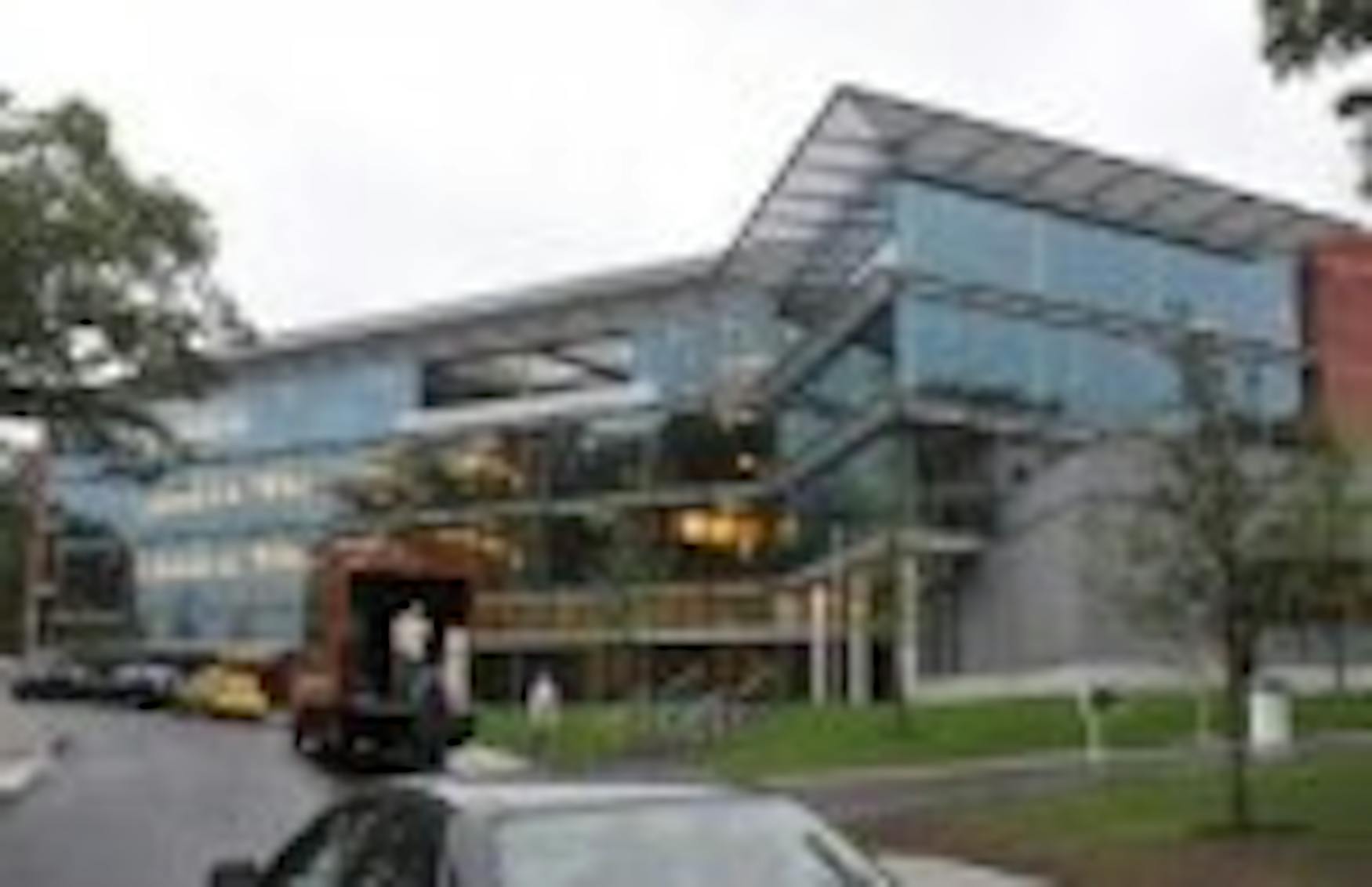Summer marks conclusion of construction projects
Clarification appendedThis summer, the conclusion of $136 million in construction took place on campus, resulting in the completion of the Mandel Center for the Humanities, the completion of the renewal of the Carl J. Shapiro Science Center, the renovation of the Charles River Apartments, the repaving of Loop Road and campus sidewalks and renovations of the three chapels and the Muslim worship space.
The Mandel Center connects to the Olin-Sang Center for American Civilization and includes a large multipurpose space for talks and events, a 90-seat theater/lecture hall, a 48-seat tiered classroom and two new 24-seat seminar rooms in addition to other unique features, such as a roof garden.
"The Mandel Center for the Humanities was funded by a [$22.5 million] gift from the Mandel Foundation and an additional gift from the Schusterman Foundation that led to expansion of the Mandel Center to include a new home for the Schusterman Center for Israel Studies," explained Vice President for Capital Projects Daniel Feldman in an e-mail to the Justice. In a later e-mail to the Justice, Feldman clarified, "The extraordinarily generous Mandel gift paid the full cost for the Mandel Center."
The Mandel Center is a result of $27 million spent over the past year and a half, wrote Feldman.
Fall classes are scheduled to be held in the Mandel Center.
Additionally, faculty offices from African and Afro-American Studies, Classical Studies, the Center for German and European Studies, Fine Arts, the International and Global Studies program, East Asian/South Asian Studies, Philosophy, History, Near Eastern and Judaic Studies and Experiential Learning will reside there as well.
While the Shapiro Science Complex renovations began in 2007, the last major aspects of the renovation finished this summer after the Friedland Life Science and Kalman Science buildings were demolished.
The addition of new space and the selective renovation of existing spaces were part of University president Jehuda Reinharz's commitment to renew the University's science resources, according to the Capital Projects website.
The only outstanding project that is left to be completed is the planting of grass where Kalman and Friedland used to stand, which is scheduled to be completed in early September, when it is more appropriate to plant grass, according to an e-mail to the Justice from Feldman.
According to the e-mail from Feldman, the new construction iniatives, although they occured separately of the report, will have an impact on the space inventory data for the space study proposal presented to the president by the Administrative Resource Review Committee in March, which aimed to better utilize existing space on campus.
No further information exists on which of the three proposed projects to fill the empty space has been chosen for construction.
Other construction projects that took place this summer include the renovation of the Charles River Apartments, a $9 million project approved in 2010 by the Board of Trustees.
The renovation included the installation of sprinklers for fire protection, replacement of kitchen appliances and bathroom fixtures, renewal of flooring, ceilings and paint and the addition of new furniture to the apartments.
"They couldn't have implemented these renovations at a better time due to the overflow in campus housing interest the university experienced last year," wrote Ben Stein '12,who also now lives in Charles River, in an e-mail to the Justice.
Jackie Benowitz '12, a Charles River resident, also praised the quality of the renovated living area.
"[The apartments] are roomy," she said, also noting the updated appliances and updated paint are positive changes.
The worship spaces on campus also completed renovations that had begun last spring, according to the Catholic Chaplain Rev. Walter Cuenin.
The Muslim Prayer Center received new facilities for ablutions, a religious washing ritual; a new stairway was constructed outside of the Berlin Chapel for improved access; and the each chapel received new seating and underwent floor renovations and repainting.
In an e-mail to the Justice, Protestant Chaplain Alexander Kern explained that the chaplains "are delighted that the University has invested so much time, care and capital into renovating these three chapels and the new Muslim Prayer Room and Lounge."
The renovations to the chapels, which began last spring with the renovation of the Harlan Chapel, concluded over the summer.
While all of the construction projects made a change to the visual appearance of the University, the Mandel Center is especially different.
The materials used in the construction of the Mandel Center are one aspect of what makes it unique.
"All capital projects at Brandeis focus on environmental responsibility," wrote Feldman, as evidenced by the "green" materials used in the Shapiro Campus Center and the landscaping along the Shapiro Science Complex.
In recent construction projects, especially the Mandel Center, high-efficiency heating and cooling systems, recycled materials, low- and zero-VOC paints and adhesives and FSC-certified wood were all "green" products utilized, according to Feldman.
In addition, the Mandel Center will feature a planted terrace and roof garden, which will be irrigated by a solar- and wind-powered rainwater capturing system.
More "green" initiatives specific to both the Carl J. Shapiro Science Center and Mandel Center include "daylight harvesting, with artificial light levels automatically dimming based on the amount of daylight entering a space," according to Feldman, in addition to the recycling of nearly all construction waste.
Clarification: The third paragraph of this article originally quoted Vice President for Capital Projects Daniel Feldman as writing in an e-mail to the Justice, "The Mandel Center for the Humanities was funded by a lead gift from the Mandel Foundation." A lead gift is one that funds the majority of the project. Feldman wrote in a Sept. 7 e-mail to the Justice that he had misused that term and that in reality, the gift from the Mandel Foundation actually funded the entire Mandel Center. The third paragraph was amended to reflect this fact.



Please note All comments are eligible for publication in The Justice.